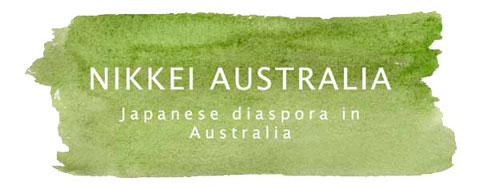The life of Setsutaro Hasegawa, one of the earliest Japanese people to migrate to Australia, is featured in the Voices Across Time gallery at the Immigration Museum in Melbourne, Victoria. The personal items such as Setsutaro’s watch, his meticulously tailored clothes, and Japanese documents are presented in a special display case.
The display was curated by Dr Moya McFadzean, Senior Curator, Migration and Cultural Diversity at Museums Victoria, with significant research assistance from Nikkei Australia member Andrew Hasegawa, who is Setsutaro’s great grandson, and Dr Lorinda Cramer of Australian Catholic University.
This display will be available for viewing for approximately four years, until 2026. The Immigration Museum is located at 400 Flinders Street, Melbourne, Victoria.

This is Andrew’s introduction to the display:
The lives of pre–Pacific War Japanese immigrants to Australia are almost unknown to most Australians. The community was small following the deportation of most Japanese at the end of World War II. Setsutaro Hasegawa, my great grandfather, was one of the few who were not forcibly deported, and remained in Australia.
A well–educated young man, he arrived in Australia to learn English, but fate dictated he was never to return. Being the eldest son, he was raised with the expectation he would care for his parents, but that was not to be. Amongst the many objects on display, a fraction of the more than 50 in the care of the Museum, we can see that he looked after what belonged to him. The calligraphy on the cover of a diary is evidence of education, the letters from home written in a cursive script is suggestive of a family who valued learning.
How the personal effects of Setsutaro Hasegawa survived is almost a story in itself. In the showcase are objects that belonged to Setsutaro including elegant hand tailored suits, letters from home and a beautiful pocket watch that still works. We live in a world dominated by a throw–away consumer culture. Personal effects in almost any shape or form are rarely made to last. Yet in the showcase, you can see objects that date from the late 19th through to the mid–20th century that are still in immaculate condition.
The objects were donated by me to Museums Victoria* more than 10 years ago to ensure their preservation and share a unique story. They were my inspiration to explore my Japanese heritage. When I was young, I peered into those tin-trunks storing the suits that belonged to ‘Grandpa Hasegawa’ (we called him Grandpa even though he was my great grandfather), drew inspiration from them, and embarked on a quest to learn who he was.
A close examination of one of the photographs on display shows a group of Japanese men with their Anglo–Celtic wives on a picnic close to Geelong. Married to local women, these men – Hasegawa, Furuya, and Ito – led their lives as hard-working members of the community in Geelong. There is also a photo of Ichizo Sato, tailor and maker of the suits on display, who was a life-long friend of Setsutaro. Ichizo’s life is another story about a Japanese resident of Australia making his own unique contribution to the community that needs to be told.

The curation of the showcase brought people together. For example, one of the anchor photographs featuring Setsutaro, his wife Ada, and sons Leo and Moto was donated by Linda Cole. Linda is the granddaughter of Jack – once known as Moto – and my second cousin. The Consul-General of Japan in Melbourne and his wife also found time to visit the showcase. Their fascination with the story of an early Japanese immigrant to Victoria was palpable. They spent more than an hour viewing it. Curators, academics, and family have engaged to help create a unique and captivating display, leading me to conclude good storytelling is communal and engages with people.
*Immigration Museum comes under the institutional umbrella of Museums Victoria
Other stories about Andrew Hasegawa and his family:






This is so exciting, Andrew! Great to see Nikkei recognised so solidly in our bricks and mortar museums as well as online.
It’s been a long journey for the objects in the showcase. It’s quite satisfying to see them on display: so many stories to be drawn from them. They keep talking to me.